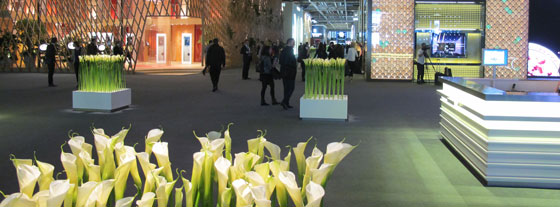
The major innovation at Baselworld 2015 was the arrival of smartwatches. But let’s not forget traditional timepieces which, as every year, were also the talk of the town.
With the release of its smartwatch early in March, Apple marked the beginning of a long series of product launches which looks set to continue. It must be admitted that these new-style watches attracted a great deal of attention from journalists and members of the public at this year’s show. However not everyone defines the word «smart» in the same way, and that’s what makes the discovery of new products so interesting. In the run-up to Baselworld, Frédérique Constant and Alpina drew the first plaudits with a smartwatch that nonetheless retains a traditional aspect. This watch, as well as accompanying you to work or into town for the evening, keeps a record of your sporting exploits and monitors your sleep patterns. Also Alfex launched the Connect watch, which in addition to the sports app, alerts the wearer to incoming emails and text messages. Breitling for its part explored the online aspect by focusing its development on the practical functions relied upon by pilots, with its B55 Connected. Nor should we forget that at its press conference on 12 March this year, the Swatch Group announced the launch of a Swatch Touch Zero One targeted primarily at aficionados of beach volleyball, but also extreme skiing and sailboarding, which in the summer of 2016 will appeal to a broader public with a model dedicated to the Rio Olympic Games. At the heart of this Swatch, an NFC (near field communication) chip allowing contactless payment. Smart can therefore have an entirely different meaning from one model to another.
In parallel with the actual launch of Internet-ready products, there were some announcements by a number of brands: TAG Heuer announced a partnership with Google and Intel (the watch is scheduled for release at the end of the year); Tissot presented a concept smartwatch, which is also expected to appear at the end of 2015; while Festina for its part announced its arrival on this market at some point next year.
Conversely, some brands stated unequivocally that they had no interest in this type of product, for example Longines. Others meanwhile attracted attention before Baselworld by announcing the first «haute horlogerie» smartwatch, protected by numerous patents and featuring a specific interface and advanced ergonomics which together make it «very rare», according to H. Moser & Cie’s slogan.
What is certain is that the world of the smartwatch is only now hesitantly taking shape, and that future developments could be exciting indeed. Perhaps Baselworld 2016 will again be imbued with the trendsetting ambience of new technologies, who knows?
Meanwhile, as in previous years, traditional watches duly delivered their fair share of innovation. Tudor surprised observers by announcing the launch of the North Flag model, equipped with the very first proprietary movement developed in-house without support from the large sister company. Louis Moinet welcomed the press to its library stand to announce the release of its first chronograph watch, the Memoris. A halfway house between the compteur de tierces, the name of the first Louis Moinet chronograph dating from 1816, and the present day, this exceptional timepiece also marks the brand’s tenth anniversary. Another brand celebrating ten years of activity is MB&F, which promised a selection of special pieces in honour of the event. Melchior, the robot, is the first in line. A product of the fertile imagination of Maximilian Büsser, this «object of the future», developed jointly with L’Epée, calls to mind the world of Darth Vador. In a quite different genre, Hermès created a surprise by launching the brand new Slim collection, which as its name indicates is ultra-thin and comes in a range of versions linked to the arts and crafts. Also worthy of mention is the Tradition Répétition Minutes Tourbillon by Breguet, a complication totally redesigned by the Joux Valley brand. Omega for its part, after announcing its partnership with Metas (Swiss Federal Institute of Metrology) unveiled the Globemaster, the first timepiece to feature the new certification. Patek Philippe also got tongues wagging with the launch of the Calatrava Pilot Travel Time, which pays homage to the pioneers of aviation; a timepiece with a surprising design, inspired by a model from bygone years. In the utmost discretion, as tradition dictates, Rolex has also launched a new movement: the COSC-certified 3255 Calibre, tested a second time by the manufacturer after casing-up in order to satisfy accuracy criteria on the wrist that are twice as demanding as those of the official organisation. This movement is featured in the new Oyster Perpetual Day-Date 40, a new generation of the brand’s well-known model. This brief round-up is of course far from exhaustive.
This edition of Baselworld was unfortunately marked by the sudden death of Jacques Duchêne, who was president of the Exhibitors’ Committee for twenty years. It would have been his sixtieth show. He was also vice-president of the FH and a member of the FH Board, and sat on various committees. He passed away on the eve of the event leaving the world of watchmaking in mourning.
April 10, 2015


 News
News